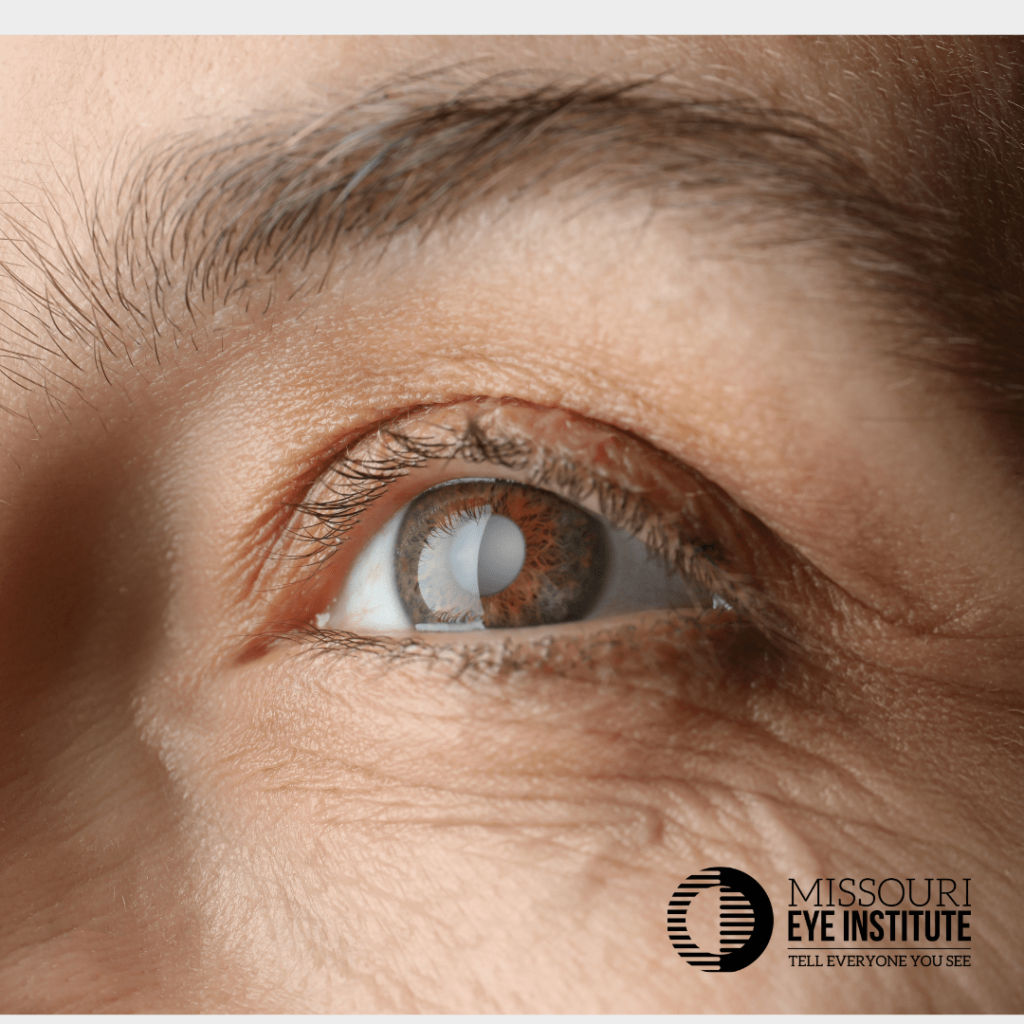
Posted by: Missouri Eye Institute in Blog on November 11, 2024

Cataracts are one of the most common causes of vision loss, but despite how widespread they are, there’s still a lot of confusion and many myths surrounding the condition.
Have you heard that cataracts only happen to the elderly or that surgery is intensive? Instead of falling for common cataract myths, we’ll present the facts so you can make informed decisions about your eye health.
FACT 1: Cataracts aren’t just for the elderly.
It’s easy to think that cataracts only affect people in their later years, but that’s not entirely true. While they are more common with age, cataracts can actually develop at any stage of life. Factors like genetics, injury or health conditions such as diabetes can increase your chances of developing cataracts even in your 30s or 40s. So, don’t ignore the signs just because you think you’re too young. If you notice changes in your vision, it’s time to talk to your doctor.
FACT 2: Eye drops won’t cure cataracts.
We’ve all seen ads or heard stories about miracle eye drops that can “dissolve” cataracts. Unfortunately, this is unproven. There’s currently no eye drop, supplement or at-home remedy that is proven or approved to reverse or cure cataracts. The only reliable (and FDA-approved) solution to cataracts is removal surgery. Thankfully, the surgery is a highly effective procedure with minimal risks and a quick recovery time. Modern surgical techniques even allow for vision correction options, like multifocal lenses, that reduce or eliminate your need for reading glasses or bifocals for most daily activities after the procedure.
FACT 3: Cataract surgery is safe and comfortable.
Some people hesitate to have cataract surgery because they’re worried about the risks or potential pain. But the reality? Cataract surgery is one of the safest and most common surgeries performed today. With advancements in technology, it’s typically done in less than an hour, and most people report little to no discomfort. Local anesthesia is used to numb your eye, so you’ll stay comfortable during the procedure. Plus, recovery is quick—you’ll likely be back to your normal activities within a few days.
FACT 4: You can treat cataracts before they get really bad.
A lot of people think they should wait until their cataracts are “ripe” before having surgery, but this is an outdated idea. In fact, waiting too long can make cataract surgery more complicated and can increase the risk of complications. Getting surgery as soon as cataracts begin to affect your daily life is the best course of action for most patients. Early treatment often leads to better visual outcomes and a faster recovery.
FACT 5: Cataracts don’t come back after surgery.
One of the most persistent myths about cataracts is that they can grow back after surgery. This isn’t true—once the cataract is removed, it’s gone for good. However, some people do experience something called a “secondary cataract,” which is when the lens capsule that holds the artificial lens becomes cloudy over time. If this happens, a quick and painless laser procedure can clear up your vision in no time.
Talk to your doctor at Missouri Eye Institute.
If you’ve been putting off cataract surgery or aren’t sure what steps to take, consult an expert. At Missouri Eye Institute, we’ll guide you through the process, put to rest common myths and fears, and provide solutions tailored to your vision needs.
Missouri Eye Institute has helped thousands of patients attain freedom from glasses and contact lenses, with convenient locations in Springfield, Joplin and Branson. Contact us at (800) 383-3831 to schedule a thorough consultation or visit MissouriEye.com to learn more about our services.
Springfield
1531 E Bradford Parkway Ste 100
Springfield, MO 65804
Branson
1000 James F. Epps Rd Ste 2
Branson, MO 65616
Joplin
4500 E 32nd St
Joplin, MO 64804